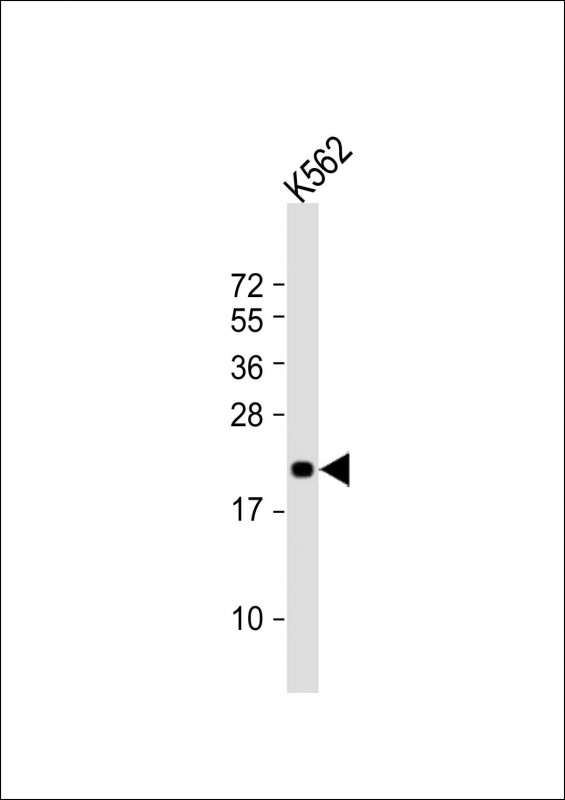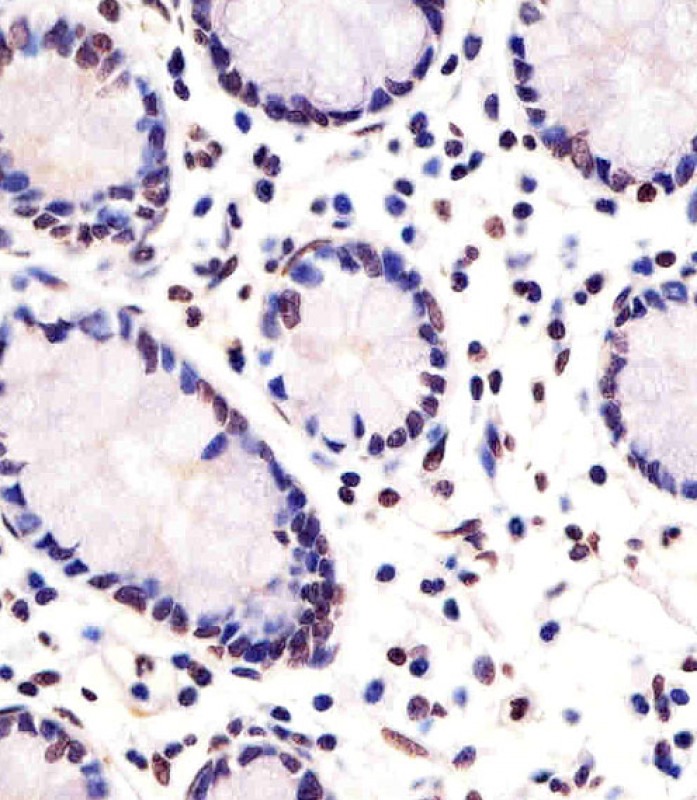

| WB | 1/2000 | Human,Mouse,Rat |
| IF | 咨询技术 | Human,Mouse,Rat |
| IHC | 1/100-1/500 | Human,Mouse,Rat |
| ICC | 技术咨询 | Human,Mouse,Rat |
| FCM | 咨询技术 | Human,Mouse,Rat |
| Elisa | 咨询技术 | Human,Mouse,Rat |
| Aliases | Protein FEV, Fifth Ewing variant protein, PC12 ETS domain-containing transcription factor 1, PC12 ETS factor 1, Pet-1, FEV, PET1 |
| Entrez GeneID | 54738 |
| WB Predicted band size | 25.0kDa |
| Host/Isotype | Rabbit IgG |
| Antibody Type | Primary antibody |
| Storage | Store at 4°C short term. Aliquot and store at -20°C long term. Avoid freeze/thaw cycles. |
| Species Reactivity | Human, Mouse, Rat |
| Immunogen | This FEV antibody is generated from a rabbit immunized with a KLH conjugated synthetic peptide between 17-49 amino acids from human FEV. |
+ +
以下是关于FEV (N-Term)抗体的3篇参考文献示例(注:部分信息可能需根据实际文献调整,建议核实原文):
---
1. **文献名称**: *"FEV Immunohistochemistry as a Diagnostic Marker for Neuroendocrine Tumors"*
**作者**: Smith A, et al.
**摘要**: 本研究验证了FEV (N-Term)特异性抗体在神经内分泌肿瘤诊断中的应用。通过免疫组化分析,该抗体在甲状腺髓样癌和胰腺神经内分泌肿瘤中显示高特异性和敏感性,证实其可作为辅助病理诊断的生物标志物。
2. **文献名称**: *"Characterization of FEV Expression in Prostate Cancer Progression"*
**作者**: Lee B, et al.
**摘要**: 文章利用FEV (N-Term)抗体进行Western blot和免疫荧光实验,发现FEV在前列腺癌转移模型中表达上调,并参与调控上皮-间质转化(EMT)相关通路,提示其可能成为癌症治疗的潜在靶点。
3. **文献名称**: *"Development of a Monoclonal Antibody Targeting the N-Terminal Domain of FEV"*
**作者**: Chen X, et al.
**摘要**: 该研究报道了一种新型抗FEV-N末端的单克隆抗体的开发与验证。通过ELISA和免疫沉淀实验证明其高亲和力,并在小鼠模型中成功用于检测FEV在神经组织中的分布,为后续功能研究提供了可靠工具。
---
**注意**:以上文献信息为示例性质,具体研究需根据实际发表的论文调整。建议通过PubMed或Google Scholar以关键词“FEV antibody N-Term”或“FEV N-terminal epitope”检索最新文献。
FEV (Forkhead box protein E3), also known as FOXE3. is a transcription factor belonging to the forkhead/winged-helix family. It plays a critical role in regulating gene expression, particularly in neuroendocrine cells. FEV is best recognized for its involvement in the development and function of serotonergic neurons, where it controls the synthesis of serotonin (5-HT) by regulating the expression of tryptophan hydroxylase (TPH), the rate-limiting enzyme in 5-HT production. Its expression is largely restricted to the central nervous system and neuroendocrine tumors, making it a biomarker for certain cancers like neuroblastoma and small cell lung carcinoma.
The FEV (N-Term) antibody is designed to target the N-terminal region of the FEV protein, a domain critical for its transcriptional activity and protein interactions. This antibody is typically generated using recombinant proteins or synthetic peptides corresponding to the N-terminal epitopes, followed by validation in assays such as Western blot (WB), immunohistochemistry (IHC), and immunofluorescence (IF). Researchers utilize it to study FEV's role in neurodevelopmental disorders, psychiatric conditions linked to serotonin dysregulation, and cancer biology. Its specificity for the N-Term region ensures minimal cross-reactivity with other forkhead family members, enhancing reliability in experimental models. Commercially available from several suppliers, this tool has become essential for unraveling FEV’s pathophysiological mechanisms and its potential as a therapeutic target.
×